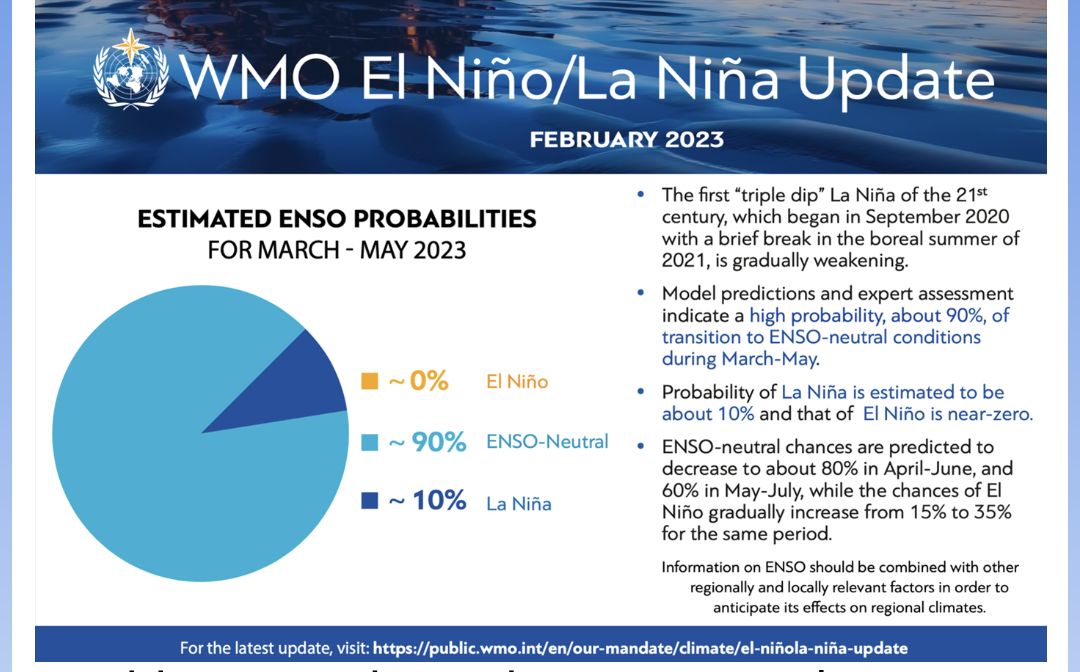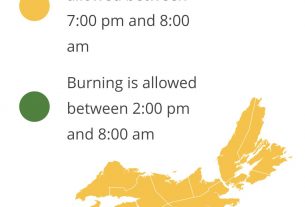**** Info via Environment Canada
El Niño may return this year
After three consecutive years of an unusually stubborn La Niña, which influenced temperature and rainfall patterns in different parts of the world, it appears that a warming El Niño event may develop in the coming months.
ENSO-neutral conditions this spring, likely transitioning to El Niño later in 2023
While the return of El Niño is considered likely, a transition period of El Niño-Southern Oscillation-neutral or ENSO-neutral conditions during the March-to-May period is highly probable (90% probability). The likelihood of ENSO-neutral conditions continuing beyond May gradually decreases, as the likelihood of El Niño conditions increases:

Persisting La Niña coming to an end
The current La Niña began in September 2020, with a brief break in the summer of 2021. Even though it is coming to an end, we are likely to see lingering impacts through the spring months.
El Niño and La Niña and our climate
El Niño and La Niña are the names given to the fluctuating warm and cold phases of a natural, cyclical climate phenomenon involving both the atmosphere and the ocean. This fluctuation occurs on an approximate irregular two to seven-year cycle and is referred to as the El Niño-Southern Oscillation (ENSO). The different phases of ENSO influence weather patterns in many places around the world, including Canada. El Niño phases also contribute to short-term increases in global temperature, whereas cold La Nina phases have a dampening effect on the rise in global temperature driven by greenhouse gases. The first triple-dip La Niña of the 21st century’s cooling effect put a temporary brake on rising global temperatures, even though the past eight-year period was the warmest on record. If we enter an El Niño phase, this will likely fuel another global temperature spike.
What are the El Niño impacts in Canada?
Historically, Canada is mostly affected by El Niño during winter and spring. Milder than normal winters and springs occur in Western, Northwestern and Central Canada. Generally, El Niño does not significantly impact Eastern Canada, including the Maritimes, but it may reduce tropical cyclone activity in the Atlantic Ocean. However, since we are transitioning into an ENSO-neutral period, we may not see much of El Niño’s impact this spring.
For more: WMO Update: El Niño may return.



